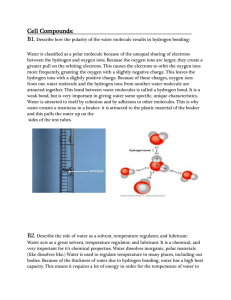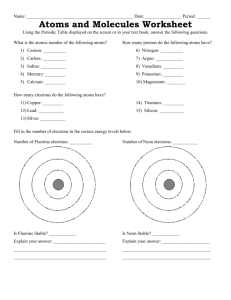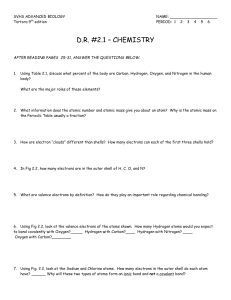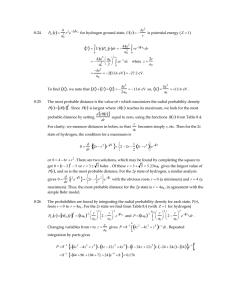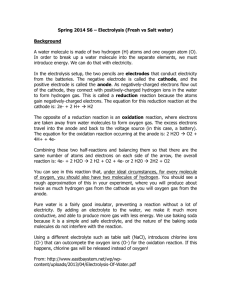Generation of Hydrogen Gas (H 2 )
advertisement
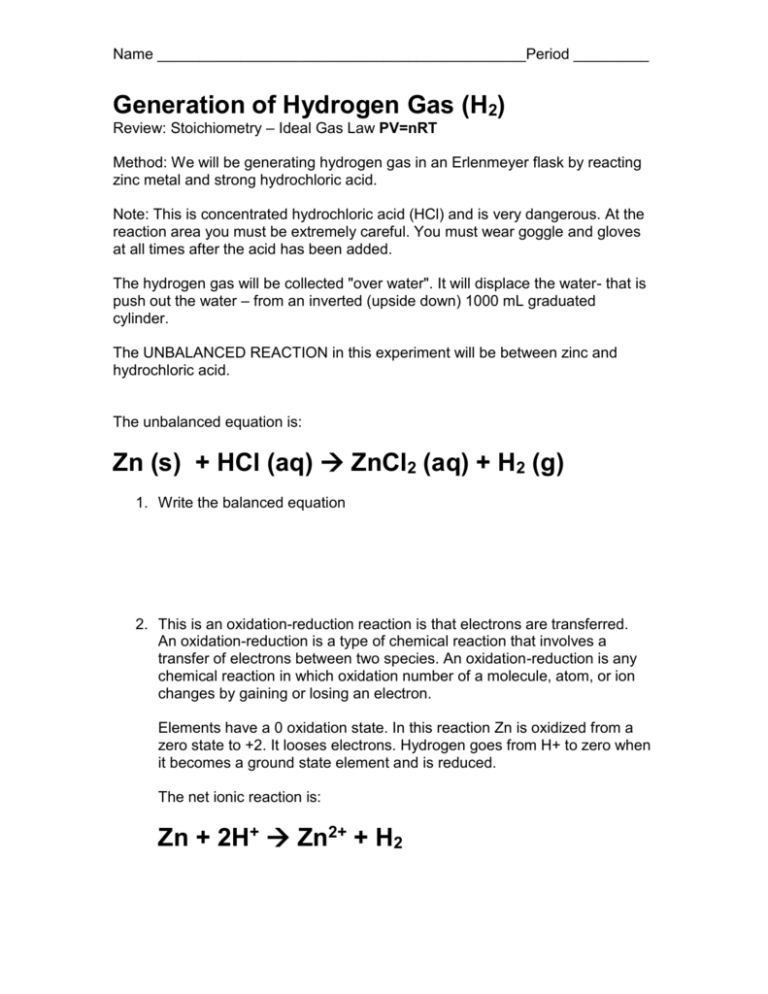
Name ____________________________________________Period _________ Generation of Hydrogen Gas (H2) Review: Stoichiometry – Ideal Gas Law PV=nRT Method: We will be generating hydrogen gas in an Erlenmeyer flask by reacting zinc metal and strong hydrochloric acid. Note: This is concentrated hydrochloric acid (HCl) and is very dangerous. At the reaction area you must be extremely careful. You must wear goggle and gloves at all times after the acid has been added. The hydrogen gas will be collected "over water". It will displace the water- that is push out the water – from an inverted (upside down) 1000 mL graduated cylinder. The UNBALANCED REACTION in this experiment will be between zinc and hydrochloric acid. The unbalanced equation is: Zn (s) + HCl (aq) ZnCl2 (aq) + H2 (g) 1. Write the balanced equation 2. This is an oxidation-reduction reaction is that electrons are transferred. An oxidation-reduction is a type of chemical reaction that involves a transfer of electrons between two species. An oxidation-reduction is any chemical reaction in which oxidation number of a molecule, atom, or ion changes by gaining or losing an electron. Elements have a 0 oxidation state. In this reaction Zn is oxidized from a zero state to +2. It looses electrons. Hydrogen goes from H+ to zero when it becomes a ground state element and is reduced. The net ionic reaction is: Zn + 2H+ Zn2+ + H2 Name ____________________________________________Period _________ Note: chlorine ions are unchanged- they are ions as reactant and as product ions. Redox reactions are comprised of two parts, a reduced half and an oxidized half, that always occurs together. The reduced half gain electrons and oxidized half loses electrons. How many electrons does each Zn atom lose? How many electrons does each hydrogen atom gain? 3. How many moles of hydrogen gas are produced if we react 2 grams of Zn metal? 4. You need to calculate the amount of hydrogen that will be produced by 2 grams of Zn metal. Show work here: 5. Calculate the amount of gas that will be formed using ideal gas law. You will measure the room temperature for the temperature of gas. PV=nRT, R=0.0821 Equation: V=nRT/P, R=0.0821, P=1 atm, T=273+25°C, mole =g/molar mass






